A museum visit in Kaiserslautern, Germany.
My wife and I live in a small town in Germany, about 40 kilometers (as the crow flies) from Kaiserslautern. If you are a fan of Pfaff sewing machines, then you may know that Kaiserslautern is where the Pfaff factory stood until it closed in the mid 1990s. Pfaff still exists as part of a larger concern, but they no longer manufacture sewing machines in Germany.
This Sunday, we discovered that the Kaiserslautern city museum had recently set up an exhibition about the Pfaff factory. With my interest in old sewing machines, it was a given that we would visit that exhibition.
There is a lot of history about the founding of the Pfaff factory in the exhibition, with copies of original documents and photos galore. The folks who did the guided tour had worked for Pfaff back in the 1990s up until it closed. Several of the workers from back then took advantage of the shutdown to “rescue” piles of documents and photos. They mentioned the tens of thousands of photos that the Pfaff photo group had made of the factory and the workers as well as all the exhibitions that the Pfaff company took part in over the century from the founding to the shutdown. They also told of having paper copies of user’s guides and other documentation for a great many of the machines Pfaff made - with copies in multiple languages, since Pfaff sold machines all over the world. I asked, and was told that they will not be making all of it available digitally online - there is simply too much to do so. They also said, however, that if someone needed a document from the collection (and if they could find it) then it would be no problem to get a copy.
The museum doesn’t have a large collection of Pfaff sewing machines - there simply isn’t enough room for it. They do have some, though, and have several set up for viewing in the Pfaff exhibition.
There’s no way I’m going to try to repeat the entire history of Pfaff here. What I will do is show you the photos I made of the machines and other interesting oddities in the exhibition.
| Exhibition |
 |
| Not a Pfaff |
 |
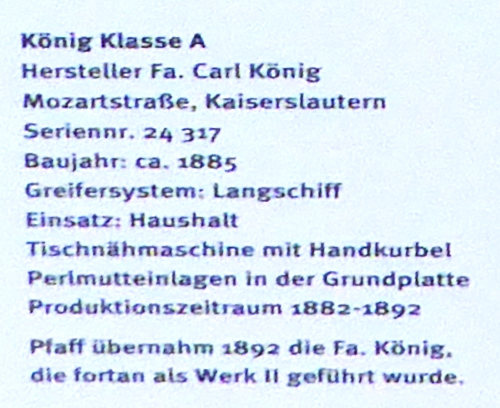 |
 |
| This is a König class A machine. König was founded about the same time as Pfaff. The König factory was literally across the street from the original Pfaff factory. Pfaff bought out König in 1892 and used their factory to expand manufacturing of Pfaff machines. |
| Model B |
 |
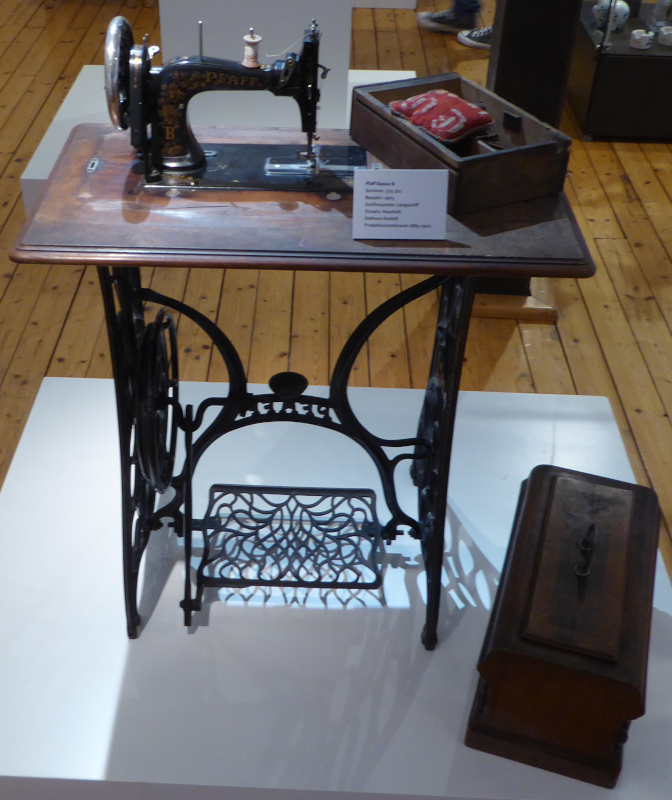 |
| This is a Pfaff model B from 1909. It is a transverse shuttle machine. |
| Toy sewing machines |
 |
| As did Singer, Pfaff made toy sewing machines. As with the Singer machines, the earlier ones were as sturdily made as the full size machines. Later ones became more toy-like and less capable. The early toys were hand cranked, while later ones were battery powered. |
| Model H |
 |
 |
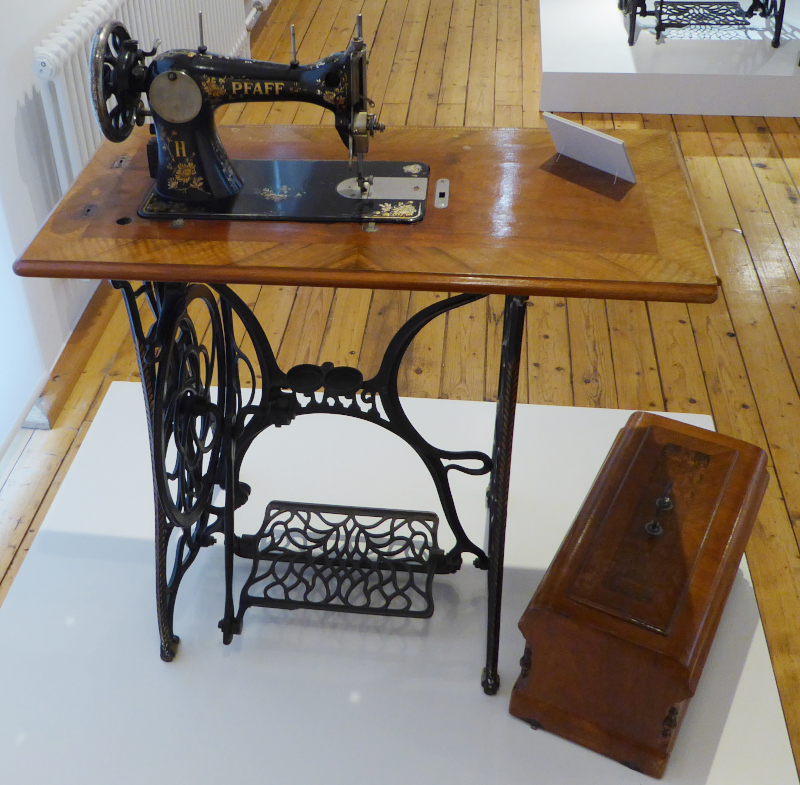 |
| Pfaff renamed all of its machines sometime around the turn of the century. They had started out giving all the machines letter names, then realized that they were going to run out of letter for model names pretty soon. The H was renamed to be the 31. The H (and the 31) were central bobbin machines much like the Singer 15. |
| Model 30 |
 |
 |
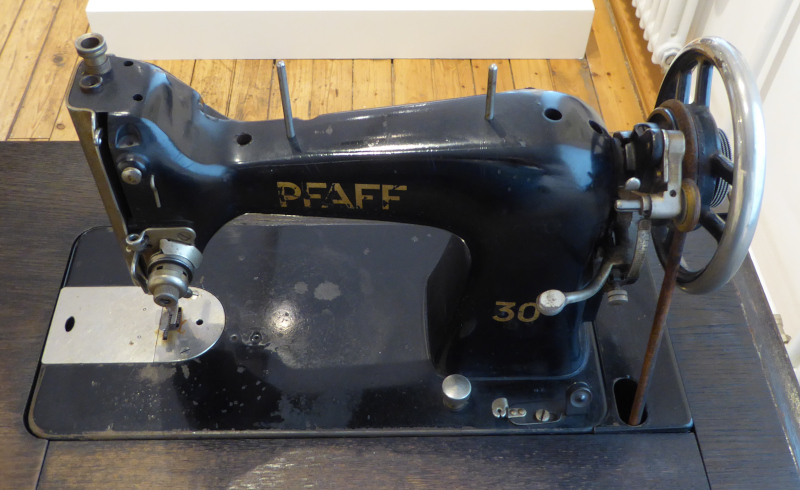 |
| The model 30 is another central bobbin machine. The difference between the 30 and the 31 is that the 30 can drop the feeddogs to do embroidery or darning, and it has the upper tensioner facing the operator instead of being on the nose plate to the left. |
| Model 65-6-12 |
 |
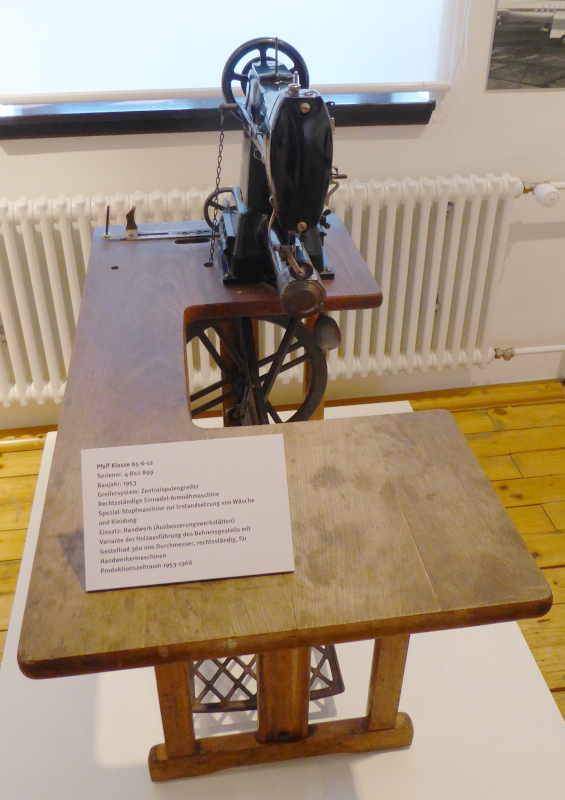 |
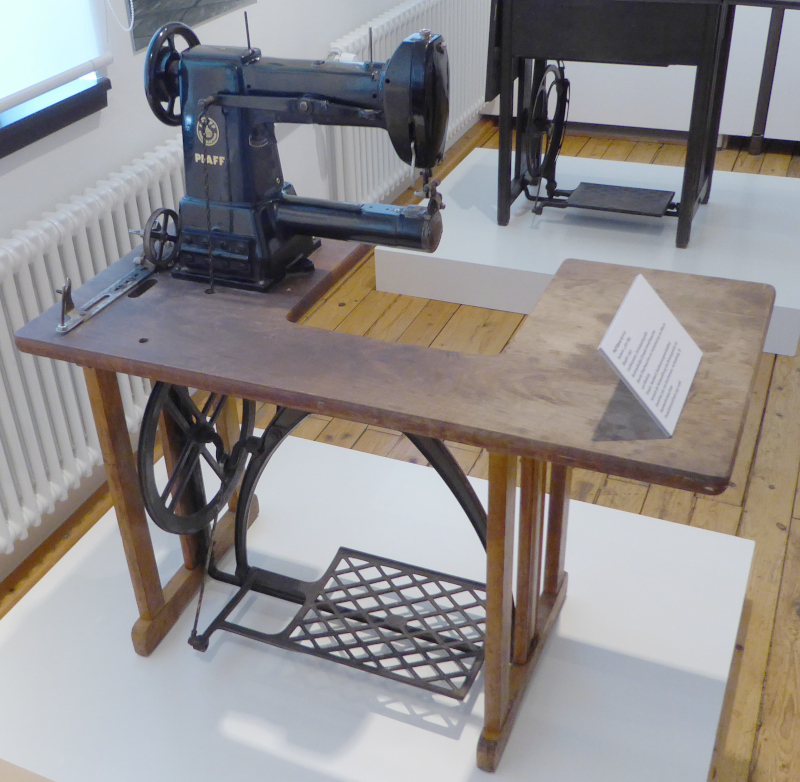 |
| This machine was used to fix clothing. It is much like a patcher, but not intended for use on leather. It was to fix clothing without having to rip seams first. With the long arm, you could easily sew a patch on the leg of a pair of pants. It uses a central bobbin rather than a barrel bobbin as a leather patcher would. |
| Model 230 |
 |
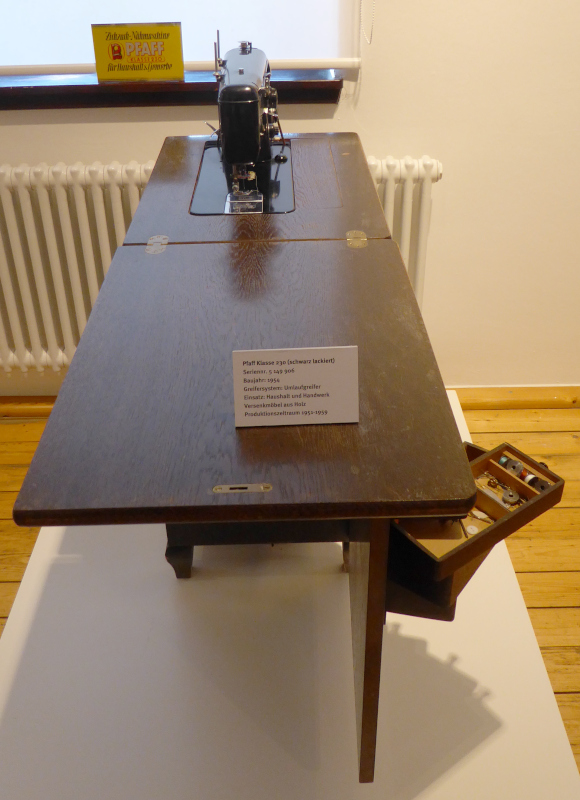 |
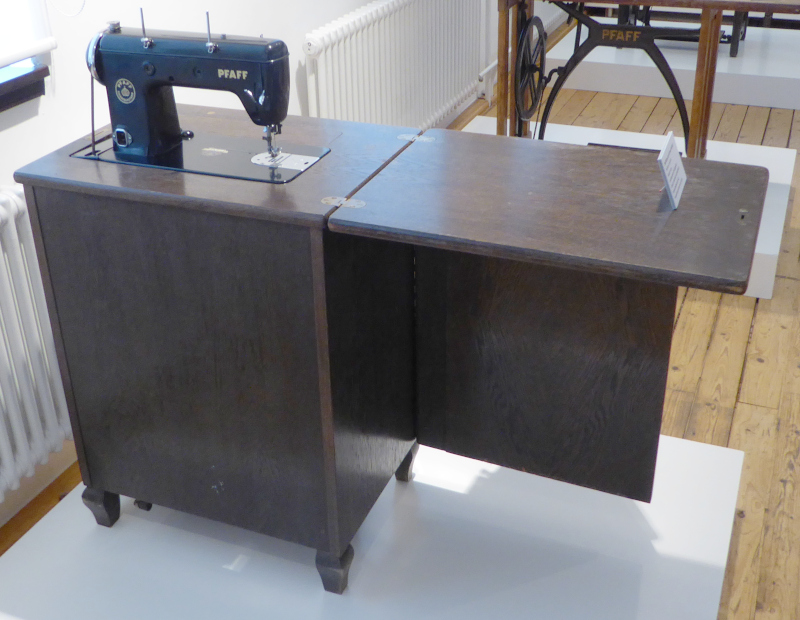 |
| The Pfaff 230 was a zig-zag machine. It was the successor of the 130, Pfaff’s first zig-zag machine. |
| Model 332 |
 |
 |
 |
| The Pfaff 332 is a zig-zag machine with a free-arm. It has a removable “table” so that it can be used like a regular flat bed machine. |
| Model 31 cut-away |
 |
| This is a cut-away model used to demonstrate the internal workings a model 31 sewing machine. |
| Model A |
 |
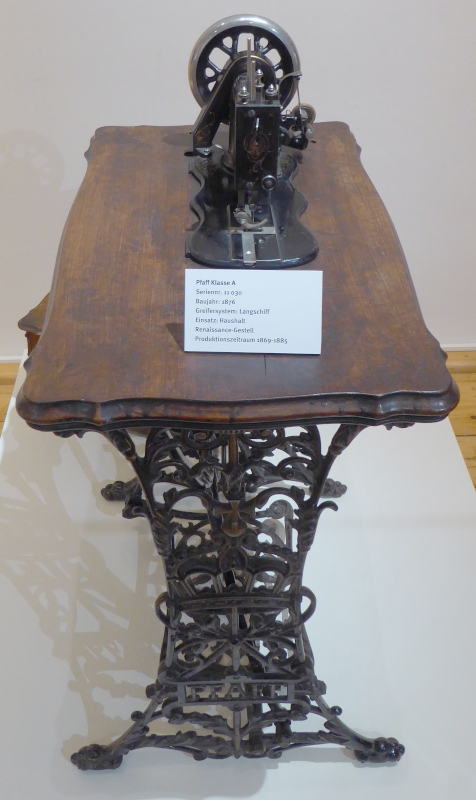 |
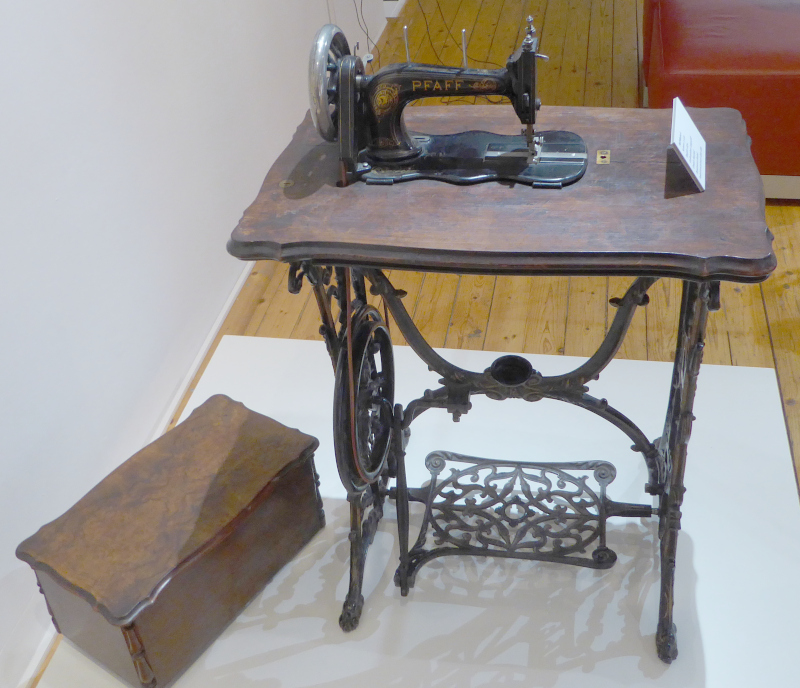 |
| The model A was a transverse shuttle machine. It was the first model Pfaff produced. |
| Model B with hand crank |
 |
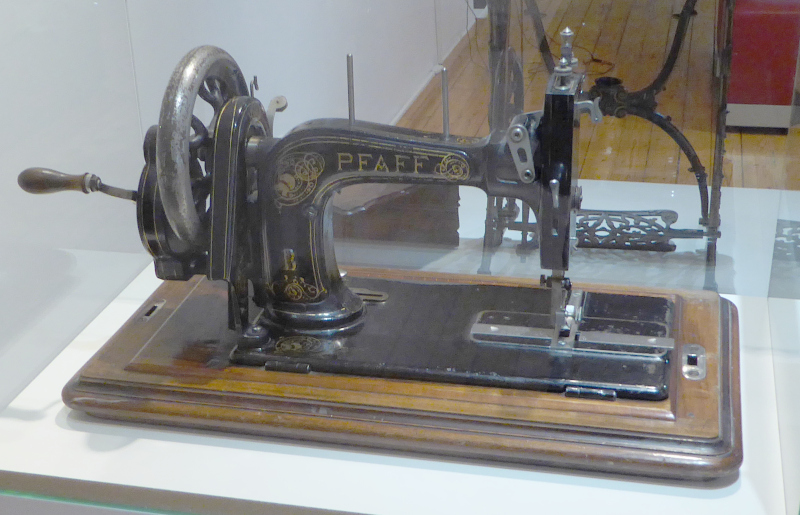 |
| Many early machines were equipped with a hand crank. They were more portable than the treadle machines. Seamstresses could take them to sew clothing where needed, visiting wealthier customers at home. |
| Pfaff knick-knacks |
 |
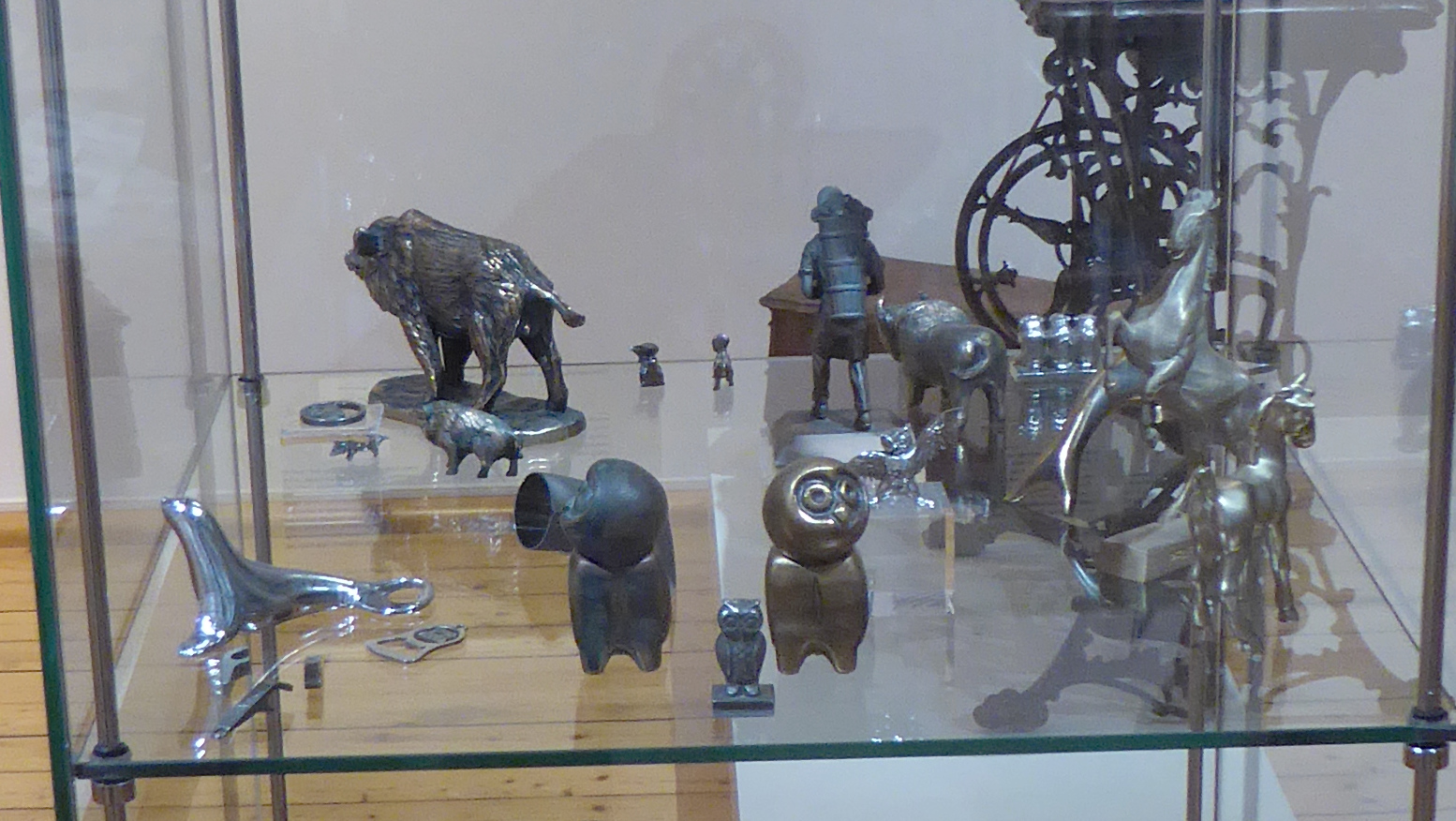 |
| Pfaff made and sold a range of Pfaff branded articles like Singer did. Oil cans and such branded articles are the usual thing, but Pfaff also made and sold small figures and jewelry cast in their own factory. |
| More Pfaff knick-knacks |
 |
| Again, like Singer, Pfaff made and sold accessory tins. They are collector’s items these days. The large stack of Pfaff accessory tins on the low shelf is the result of a bet between two collectors to see who could collect the most tins. The shown collection won. |
A final note: The Greist sewing machine attachments that are so well known in the USA appear to have been manufactured by the Greist company in Kaiserslautern. The guide mentioned that in passing as we were looking at all the doodads available from and for Pfaff machines.

































